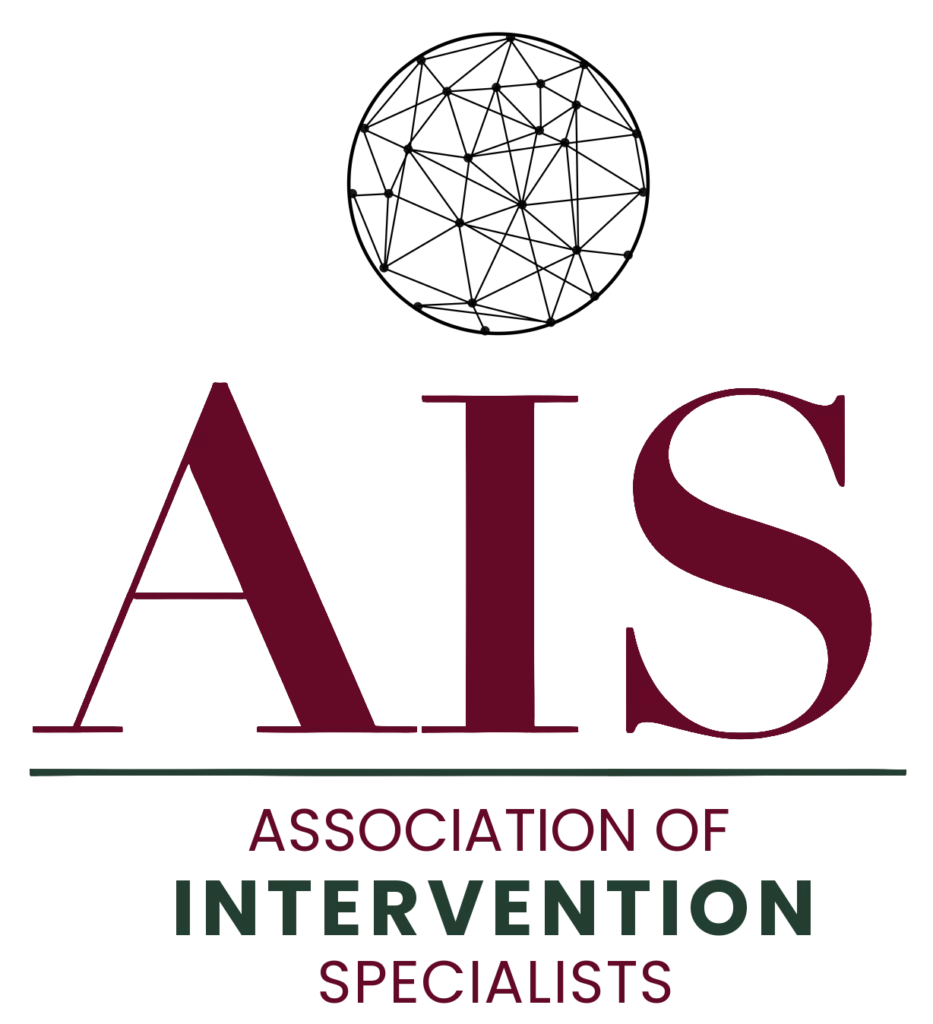An intervention, or “what is an intervention,” is a carefully planned process where friends, family, and sometimes colleagues, alongside an interventionist, come together to confront an individual about their drug addiction, alcohol abuse and self-destructive behavior—with the goal of persuading them to seek support, help and offer treatment options. If you’re considering whether an intervention is the right step, this article will explore its types, purpose, and potential outcomes without overwhelming you with jargon or unnecessary detail.
One of the hardest things in life is watching a family member or friend’s life spiral down to complete destruction. Many things can cause this type of spiraling destruction but the main things are substance abuse and mental illness. At times, it can feel like there is nothing you can do for that person. Some people enable the person’s addictions because they feel like they can “control” the situation and keep it from getting worse. If you think about it, this type of person is only causing the spiraling to go at a faster rate. This, in the end, is defeating the whole purpose of helping their family member or friend accept treatment. The best way to get the attention of someone who is struggling with substance use disorders or an alcohol use disorder is by an intervention. Early intervention is not always possible, so know whenever the actual intervention happens, addictive behaviors are addressed.
A formal intervention is a gathering where the entire family, or one family member, friends and even colleagues gather together with the drug addict or alcoholic and in a caring way present the reality of their situation to them. The best way to make the professional intervention successful is by including an interventionist so there is a professional party involved. The interventionist can also be there to moderate the flow of the intervention as well as handle any high emotions that may arise. An intervention can be a highly emotional experience and a trained, qualified interventionist can help walk all the loved ones through the experience and recommend treatment centers if needed.
Overview
- Interventions are structured approaches designed to help individuals realize the need for help with addiction or mental illness, facilitated by a team including family, friends, colleagues, and a professional interventionist.
- Professional interventionists play a critical role in preventing negative confrontations and ensuring constructive dialogue, while intervention letters help communicate love, concern, and the need for change effectively.
- Preparation and emotional and mental readiness are key components for a successful and professional intervention, which includes understanding addiction, anticipating reactions, and setting clear boundaries and consequences.
What is Involved with an Intervention?

You may be asking, “What is involved in an Intervention?” The answer is simple, yet complex at the same time. There are many aspects and parts of an intervention that need to be planned out and taken care of before, during and after you present or engage with the individual that is suffering from alcohol, substance abuse or substance use disorders. In fact, the best way to start is by making an appointment with a an interventionist to talk things through. This way, the interventionist can present the variety of intervention models that are available and begin to prepare each family member, loved one, friend and colleague before the actual intervention. It is imperative that everyone involved is on the same page and has an appropriate plan.
The concept of interventions is often met with skepticism. Some may perceive them as unhelpful or even detrimental, an inevitable outcome of the lack of empirical support and the misconceptions surrounding them. However, actual intervention is much more than mere confrontations; it is a structured approach designed to address alcohol, substance abuse, and offer options to overcome addiction and initiate a natural healing process.
Interventions serve multiple purposes. Their main goals include:
- Helping the troubled individual realize the need for help
- Creating a supportive family dynamic
- Identifying enabling behaviors
- Setting appropriate boundaries
The process of an intervention can inspire profound change, offering a dedicated space for families and friends to express their concerns and the impact of addiction. The process of an intervention is pivotal in helping the individual recognize the extent of their substance abuse and addiction and the support system’s willingness to assist them.
The success of an intervention lies in its structure and the roles of those involved. The team involved in the loved one’s addiction intervention is typically composed of:
- family
- friends
- colleagues
- if a policeman or military intervention is happening perhaps trusted officers
- family physicians
- professional counselors or addiction professional
- a professionally trained interventionist
This committed group of people collaboratively to build an environment where the individual can be encouraged to accept help and professional treatment for their substance abuse problem or mental health condition, including mental illness.
The Role of Professional Interventionists
Professional interventionists drive the process of an intervention. Their role is crucial in managing the emotional landscape during the intervention, preventing confrontations, and ensuring a constructive atmosphere. An intervention without a trained interventionist and addiction professional might inadvertently devolve into a negative confrontation, creating resistance, negative effects, and a denial of treatment versus the atmosphere that will encourage positive change and a person that will accept treatment. Hence, professional guidance is vital to enhance the likelihood of a the intervention’s success.
Professional interventionists provide extensive assistance, their responsibilities going beyond merely moderating. By assigning specific tasks to participants, they facilitate a well-organized and efficient approach. Qualified mental health professionals with specific training and experience in addiction treatment are often are trained and certified interventionists. The Association of Intervention Specialists verify professional interventionists and believe they are fundamental to the success of an intervention.
The Intervention Plan
Once everyone who is involved in the Intervention knows their role, the interventionist will give everyone an assignment, which is the first part of making it successful. In many cases of an Intervention, the interventionist will ask each involved person to write a letter to the addict. The letter needs to focus on the following items:
- What the addict means to the individual.
- All the experiences of the addict directly related to that particular individual.
- The impact the addiction has had on the particular individual.
The last part of the letter is especially important; the addict must receive and understand the message of “Things Must Change for Us All and We Love You”. Essentially, the individual will list particular situations that have occurred directly related to the addicts use that have been devastating to that loved one and how that loved one felt about the situation. It is the hope that the love that is felt as a result of speaking the truth about how their addiction has impacted others’ lives will motivate the addict to seek immediate assistance.
Crafting the Message: Letters of Impact

An integral part of the process from some intervention models is crafting the right message. This is often achieved through intervention letters or practiced conversations. These letters and conversations aim to express love and concerns without being accusatory. Interventionists guide participants in writing these impactful messages, ensuring they communicate effectively with the loved one.
Letters of impact begin by affirming the writers’ compassion and reminiscing about positive interactions before the prevalence of addiction. They include clear, non-threatening examples of how the loved one’s addiction has personally affected the writer. Through these letters, writers reinforce their love and concern, urging the loved one to seek help and specifying the support they are willing to provide. They also state the personal boundaries and consequences should the offer of help be declined. These letters serve as a powerful tool in communicating the love, concern, and hope for recovery to the loved one.
Setting the Stage for Change
Laying the groundwork for transformation forms a vital component of an intervention. The intervention is a purposeful gathering of friends, family, and colleagues who come together to confront the addicted individual in a caring way with the reality of their addiction. The collective message? Change is necessary, and they are loved.
Careful planning is crucial for the success of an intervention to prevent conflict and resentment. This involves:
- Designating a point person for coordination
- Rehearsing the intervention to prepare for different responses
- The interventionist facilitating the process, helping the family approach their loved one with respect and support
- Focusing on expressing concern without resorting to anger or accusations
This supportive and respectful environment sets the stage for change, increasing the likelihood of a success in the intervention.
Preparing for the Intervention

The journey to a successful intervention begins long before the actual event. Preparation is key and involves several crucial steps:
- Craft a clear and focused intervention strategy.
- Rehearse the intervention.
- Be mentally and emotionally ready for the loved one’s potential reactions.
- Select the right time for the intervention, aiming for a moment when the individual is least defensive.
- Ensure all participants are available.
The preparation phase is not just about the logistics but also about readiness. Participants should be mentally and emotionally prepared, with contingency plans in place to handle potential reactions from the loved one, such as acceptance, denial, or defensiveness. Subsequent subsections will explore in depth the emotional and mental preparations necessary for an intervention.
Emotional Readiness: Bracing for the Intervention
Emotional readiness is a critical component of preparation for an intervention. Participants must understand the potential reactions of the loved one, such as denial, anger, or even walking out of the intervention. Being prepared for these reactions can help manage the emotional rollercoaster that might accompany the intervention.
Emotional preparation for an intervention involves:
- Anticipating the excuses or resistance the loved one might express
- Being prepared for feelings of anger, guilt, or frustration if the loved one refuses care
- Considering seeking counseling for oneself
- Having support systems and educational resources in place to help the team involved with the intervention cope with the stress and potential disappointment following an intervention.
Continuous communication between the participants can provide the necessary emotional support regardless of the intervention’s immediate outcome.
Mental Preparedness: Understanding Addiction and Recovery
Mental readiness for an intervention requires comprehending drug addiction as a complex neurological disorder that involves compulsive substance use, despite detrimental consequences. Recognizing that addiction affects both the brain’s structure and function can help participants maintain compassion during the intervention.
Awareness that recovery from addiction is a prolonged process that may require several treatment efforts helps in setting realistic expectations. Accepting that relapse might occur as part of the recovery journey enables participants to prepare for potential setbacks without perceiving them as failures. A firm understanding of addiction as a disorder requiring medical treatment aids in the mental readiness for the intervention.
Participants should educate themselves about the disease of addiction to manage the situation effectively when disease symptoms arise during and after the intervention.
The Intervention Participants: Roles and Responsibilities

An effective intervention hinges on the cohesive effort of the team for the intervention. Typically composed of family, friends, colleagues, and a professionally trained and credentialed interventionist, each member plays a distinct role in the process of the intervention. Each team member has the responsibility to communicate their concerns and support for the loved one in a non-confrontational manner. The collective effort of the intervention team creates a structured environment where the loved one can be encouraged to accept help for their substance abuse, use or mental health condition. Addiction treatment options may include treating disease symptoms for not only substance use disorders but medical procedures that have been pushed to the side due to addiction.
Family, friends, and colleagues bring unique insights to the process of the intervention through their personal relationships with the loved one. On the other hand, professional interventionists bring expertise and experience, guiding the process to ensure a structured and effective approach.
Family Members’ Involvement
Family often hold a central role in the intervention due to their close relationship with the loved one. They provide personal insights and emotional support that can be pivotal in persuading the loved one to seek treatment. The involvement of family members can demonstrate to the loved one the widespread effects of their behavior and the collective desire for them to get help.
Family-involved interventions, including systemic family intervention, have shown to improve patient outcomes including symptoms of depression and anxiety better than usual care or health education interventions. Family services are often an integral part of treatment, especially for young adults, helping to improve communication and overall family functioning.
Contributions from Friends and Colleagues
Friends and colleagues can offer a different perspective on the loved one’s behavior, shedding light on the effects of addiction or mental health issues in settings like the workplace and in social activities. By recognizing the need for intervention, friends can prompt an addict to consider making positive changes.
The participation of friends and colleagues in the intervention underscores the message that the individual’s alcohol abuse has repercussions that extend beyond the immediate family.
The Interventionist’s Leadership
The interventionist serves as the guiding force, navigating the intervention. They ensure clear communication and use a well-prepared script during the intervention, leading to an organized and effective process. The presence of professional interventionists increases the likelihood of successful interventions by guiding dialogue and helping the family express their concerns and love effectively.
The interventionist’s role doesn’t end with the intervention. They continue to provide:
- Educational support to families
- Recovery coaching, aiding the loved one’s transition into a treatment center and sobriety
- Evaluation and planning for each intervention stage
- Leadership qualities essential to achieving a compassionate, supportive, and ultimately successful intervention outcome.
Mapping Out the Recovery Process and Path

Mapping out the path to recovery involves a thoughtful process. From exploring addiction medicine doctors, detoxification and treatment centers to developing a customized plan and ensuring continuity of care, every step is crucial in the journey towards recovery. The ultimate objective of presenting treatment options in the intervention is to encourage the addict’s commitment to enter a substance use disorder facility, which supports their specific needs and continuous journey towards recovery.
Exploring Treatment
Gaining knowledge on the available treatment types marks an essential step towards a loved one’s recovery. Treatment options can range from medication-assisted treatment, behavioral therapies, and support groups. Offering a choice in what treatment center can improve clients’ motivation to engage and commit to their recovery plan.
There are different types of outpatient treatment available, depending on the level of support needed:
- Outpatient treatment programs: These programs require less than nine hours a week and offer flexibility for individuals to manage their recovery while maintaining work or education commitments.
- Intensive Outpatient Programs (IOP): These programs provide 20 plus hours of treatment per week for individuals who require more support.
- Partial Hospitalization Programs (PHP): These programs offer a rigorous treatment schedule of daily participation for 5 or more hours per day, aimed at patients who need an intensive and structured treatment environment.
Residential treatment programs provide a long-term recovery environment at a treatment center, with programs varying from one month to a year. Inpatient treatment in hospitals or clinics is usually reserved for individuals with serious medical conditions or co-occurring mental disorders, requiring a more controlled and medically supervised environment.
Developing a Customized Treatment Plan
A personalized treatment plan that caters to an individual’s unique needs is crucial in addiction recovery. Such a plan should cater to physical, psychological, emotional, and social aspects, alongside substance use issues. Treatment services that may be part of a customized plan include:
- Individual counseling
- Group counseling
- Educational services
- Vocational services
- Life skills training
- Mental health treatment for those with co-occurring disorders
Creating personalized treatment plans involves setting specific, measurable, achievable, relevant, and time-bound (SMART) goals that align with the individual’s aspirations and barriers to recovery. Regular monitoring and adjustment of the treatment plan is vital to ensure that it remains relevant and responsive to the individual’s progress and any new challenges that arise.
Emphasizing the importance of focusing on progress, such as noting triggers that no longer affect them and celebrating small wins as sources of inspiration, can reinforce healthy behaviors and positively influence their commitment to recovery from destructive behaviors.
Ensuring Continuity of Care
Continuity of care is crucial in the journey towards recovery. Interventionists aim to build a bridge to recovery for both the individual with addiction and their family, offering sustained support through the transition into treatment. After an intervention, clear steps and expectations should be communicated to maintain the momentum towards recovery, with interventionists guiding clients towards appropriate community treatment facilities and resources.
Continuing care, also known as aftercare or follow-up care, consists of ongoing treatment and support following the completion of a structured program. This ensures real-world application of recovery strategies. Support following initial treatment can extend to various settings, such as:
- Recovery houses
- Sober dorms
- Support groups
- Ongoing therapy sessions for both the individual and their family.
Navigating Post-Intervention Challenges
Navigating post-early intervention challenges can be a daunting task. Whether treatment is accepted or refused, it demands ongoing support and understanding from the intervention team. The interventionist continues to support the family after the intervention, helping them deal with the outcomes regardless of whether the subject accepts or refuses the suggested treatment.
In the subsequent subsections, we’ll outline the measures to be taken when treatment is accepted and strategies to manage situations when treatment is refused. Both scenarios represent different challenges and require unique approaches to ensure the best outcome for the individual and their loved ones.
When Treatment Is Accepted
When treatment is accepted, it marks the beginning of a new journey towards recovery. Providing a stable environment that minimizes stress and triggers can significantly support someone who has accepted treatment, giving them time to heal without enabling substance use behaviors.
Here are some ways to support someone in recovery:
- Encourage them to set small, specific, and achievable goals
- Reward them for taking steps in the right direction with non-substance related rewards
- Reinforce healthy behaviors and positively influence their commitment to recovery
These strategies can help them stay on track and continue their journey towards a healthier life.
It’s vital to understand that setbacks and mistakes are a part of the recovery journey. It’s important to help the individual identify triggers and develop contingency plans while using tools like gratitude journals to help them maintain a positive mindset. This approach ensures that they are equipped to handle any obstacles that may arise during their recovery journey.
Handling Refused Treatment
When treatment is refused, it can be a challenging scenario for the intervention team. Setting boundaries with a loved one who refuses treatment, including the possibility of ceasing contact or withdrawing financial support, is crucial to protect the mental and emotional health of the intervention team. Providing consistent support and readiness to help without inducing guilt or blame can encourage a loved one to consider seeking treatment after they have initially refused.
It’s important for family members to support themselves through counseling, support groups, and personal wellbeing practices, so they can manage stress and act as positive role models. Recognizing one’s limits in controlling the loved one’s behavior, avoiding enabling their addiction, and being prepared for potential defensiveness or anger is necessary to maintain the integrity and effectiveness of the intervention.
Summary
As a structured approach designed to address addiction and initiate healing, interventions hold immense potential to transform the lives of individuals struggling with addiction and their loved ones. A successful intervention requires careful planning, emotional and mental preparation, a committed intervention team, and a clear path to recovery. Be it the role of professional interventionists, the impact of well-crafted letters, or the support from family members, friends, and colleagues, every component is critical in conducting a successful intervention.
The journey to recovery can be daunting, filled with challenges and setbacks. Yet, with a solid understanding of the intervention process, the right support, and a commitment to recovery, it is a journey worth taking. After all, the end goal is not merely sobriety but a reclaimed life, full of promise, hope, and joy.
Author: Dr. Jerry Law, D.Min., MDAAC, BRI-II, CIP
Frequently Asked Questions
An example of an intervention is a meticulously organized process in which friends, family, and occasionally coworkers, together with a professional and trained interventionist, unite to address an individual’s substance abuse, alcoholism, or harmful behaviors. The primary aim is to encourage the individual to acknowledge their issues and motivate them to pursue assistance, support, and explore available treatment alternatives.
The 4 types of interventions are confrontational, invitational, collaborative, and non-confrontational. Each has its own unique approach and purpose.
The purpose of an intervention is to help the troubled individual acknowledge the need for help, establish a supportive family dynamic, recognize enabling behaviors, and set boundaries.
A professional interventionist plays a crucial role in managing emotions, preventing confrontations, and ensuring a constructive atmosphere during the intervention and the process leading up to the intervention event, thus facilitating a structured and effective approach.
Family members contribute to an intervention by providing personal insights and emotional support, which can be pivotal in persuading the loved one to seek treatment. Their close relationship with the individual makes their role central in the intervention process.

